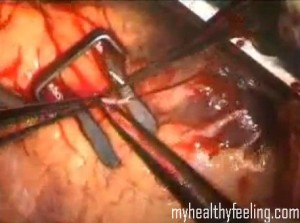Cardiac surgery is a general term to a procedure done to the heart or any part of it including the surrounding blood vessels. This is done to completely cure a condition or merely alleviate symptoms of certain diseases. Heart surgery is carried out by specialized practitioners called cardiac surgeons. These specialists have been through various trainings and seminars to help them master the operation.
It was not until the late 1890’s that a cardiac surgery was successfully done. No complications were reported and the patient lived to have an improved life. Since then, medical advancements keep on working to find more ways to decrease the mortality rate improve the way of life and ultimately increase a person’s life span. Nowadays, over 90% success rate are reported for those uncomplicated cardiac surgeries.
Heart surgeries are done to either congenital or acquired heart defects. Congenital conditions are those inborn defects in the heart’s structure and function. This includes stenosis and atria to various heart parts, Tetralogy of Fallot and Ventricular Septal Defect. Most are caused by incomplete closure of the fetus’ blood circulation making unoxygenated blood mixed with oxygenated ones.
Acquired heart defects are due to trauma or infection. Trauma can be due to any major accidents causing chest compression. It can also be a medication induced condition. Blockage of the heart with excessive plaque build-up can also cause several heart related problems. Infections, like endocarditis, can also cause proper blood circulation problems.
How It’s Done; Heart Surgery Procedure
Specialists are always looking for ways to make cardiac surgery more effective and with fewer complications. There are now different types of cardiac surgery to choose from. This is based on the extent of heart damage, seriousness of complications and treatment needed.
• Open heart surgery
With this cardiac surgery, the chest is cut opened and internal structures of the heart are readily visible and accessible by surgeons. This allows more movement and vision to any heart problems. Although this can be linked with post-operative infections, this is still the best method to use when dealing with generalized heart failure. See open heart surgery procedure and video
To let the surgeons work in a stable field, the heart is stopped during the process. Cardio-pulmonary bypass plays an essential role to have a successful operation. This bypass ensures that proper blood circulation is available through all the vital organs of the body including the brain.
• Coronary Artery Bypass Surgery
This is a more recent technique for heart surgery. This is still an open heart surgery, however with fewer complications and faster recovery time. Typically a cardio-pulmonary bypass is still needed. Sometimes the heart would be left beating but controlled during the whole procedure. This procedure is generally chosen when there is a blockage in the blood vessels.
This could be due to arteriosclerosis in the artery wall. Arteriosclerosis is the accumulation of blood contents including fats and minerals. Other causes are blood clots and swelling due to infection. During the process healthy blood vessels from other parts of the body are used to redirect the blood flow in the heart. These blood vessels are harvested through endoscopic techniques.
• Robot assisted heart surgery
This is used for least invasive cardiac surgery. In this procedure robotic arms are connected to different tools that can be used during the operation. The surgeon may or may not be present in the same setting. This is why the method is called remote surgery.
Nursing Care; Cardiac Surgery Recovery
Prior to the heart surgery, various diagnostic tests and physical examinations are scheduled. These will ensure the patient can endure the stress brought about by the operation. Drugs for suppressing blood clot are stopped a few days before the surgery. This is to avoid extensive bleeding during the procedure. Immediately inform the doctor if other condition, unrelated to the cardiac problem, will arise.
During the day of the operation, proper hygiene is strictly implemented to safeguard the patient against infection. Antibiotics can also be prescribed by the doctor to help support the immune system from possible infection contracted from the surgery. The neck up to the bottom thoracic area is prepped and sterilized.
A cardiac surgery can last from 4 to 24 hours depending on the complications of the procedure. Bypass can last for about 3 to 5 hours if the results are favorable. The first few hours out of the operation are spent in the Intensive Care Unit to fully monitor vital signs. Once stable, patient can stay in the hospital up to 7 days.
It would take more than 2 months after the cardiac surgery before full recovery is achieved. Even so, strict compliance in proper diet and adequate exercise is needed to fully restore the body. Rest and a stress free lifestyle are also essential to help the heart recuperate. Keep the incision site clean and dry at all time. Watch for signs of infections such as redness, swelling and warmth. Report any changes immediately to your care provider.
Heart Surgery Videos
Check out the heart surgery video where the surgeon is operating the mitral valve. The mitral valve, located on the left side of the heart, is the place from where blood comes, from the lungs and is pumped to the various areas of the body. When the valve does not work, the blood goes back into the lung.
]
Check out this cardiac surgery video, in which the surgery repairs a congenital heart defect with innovative technology to repair damaged valves in the heart.

